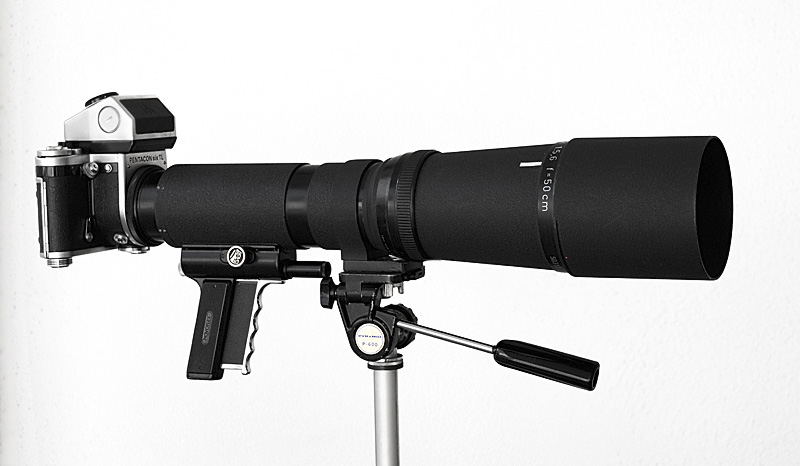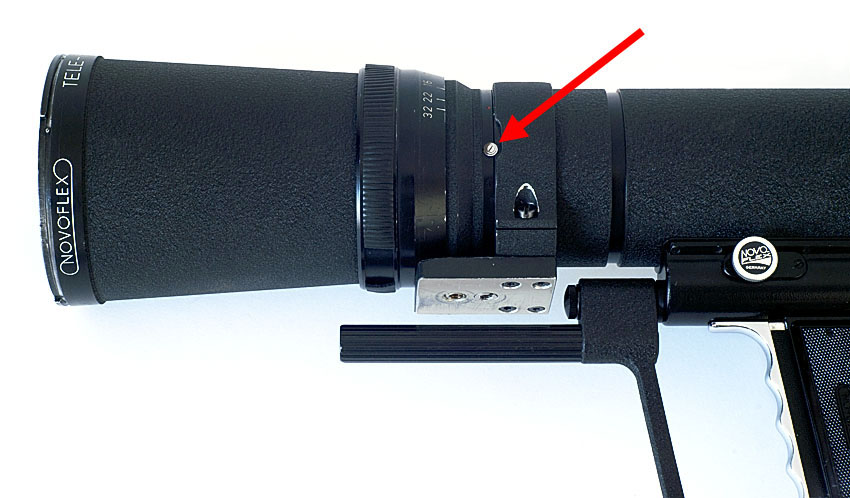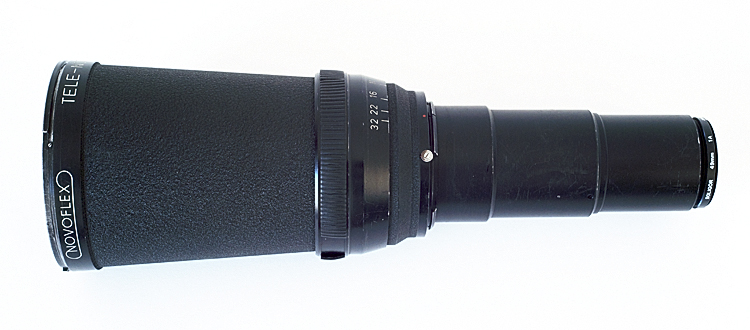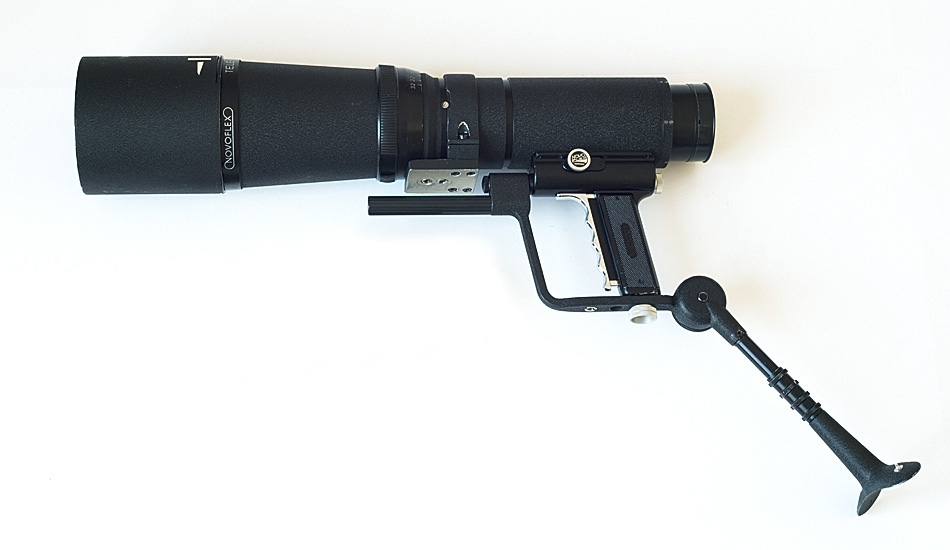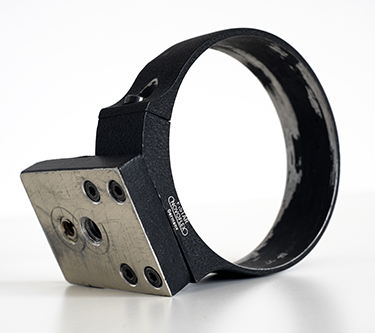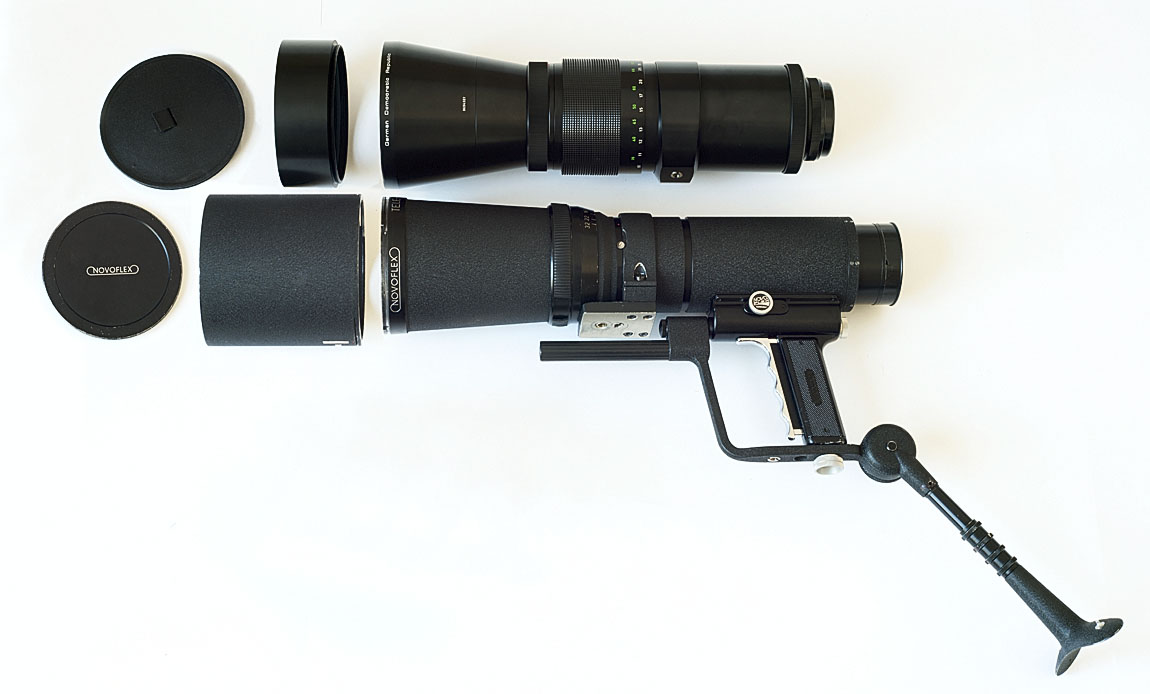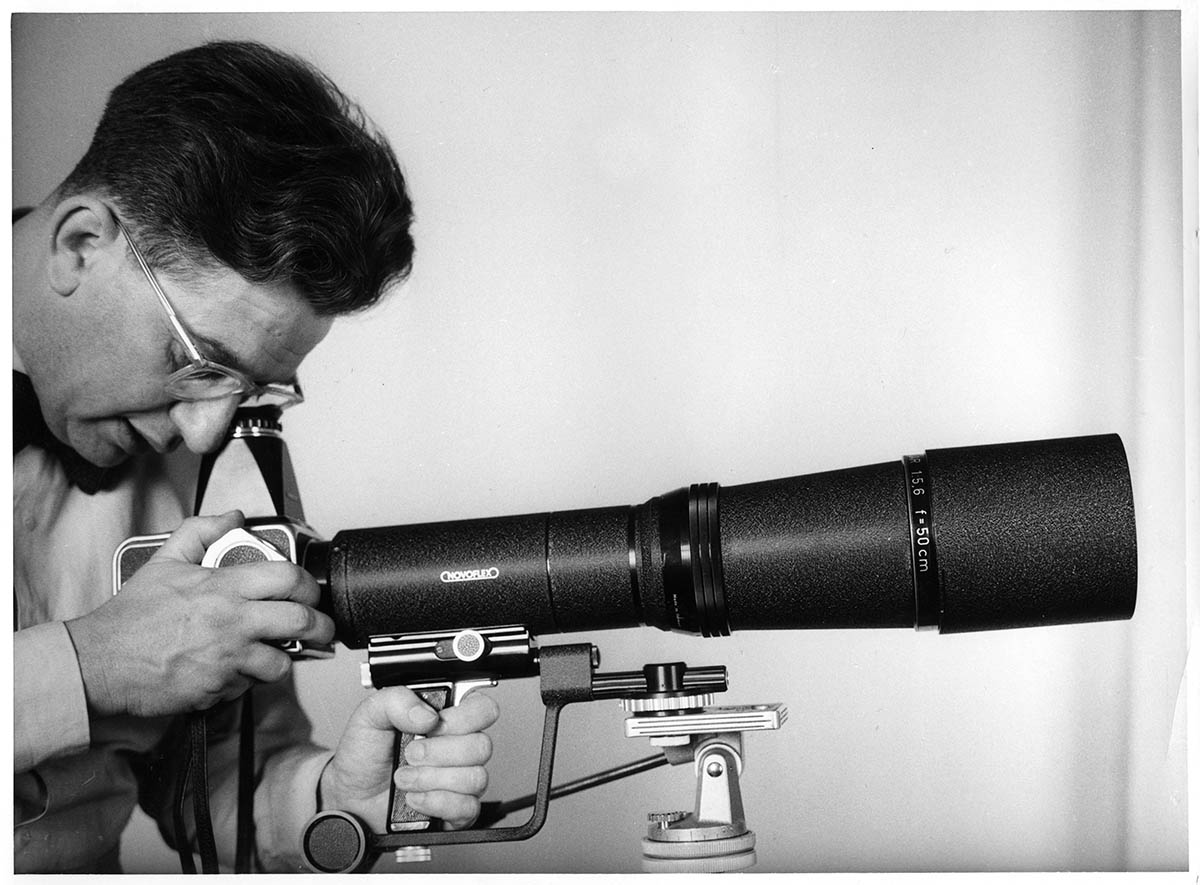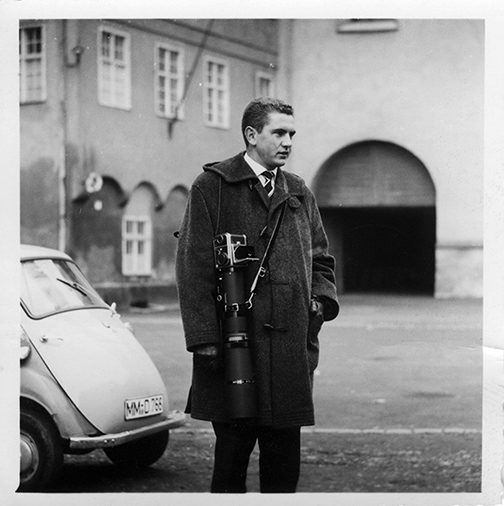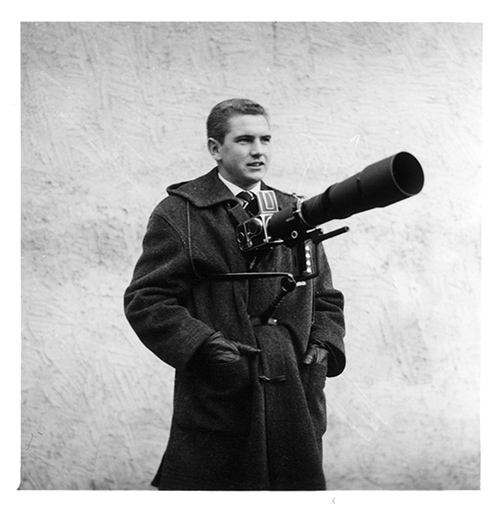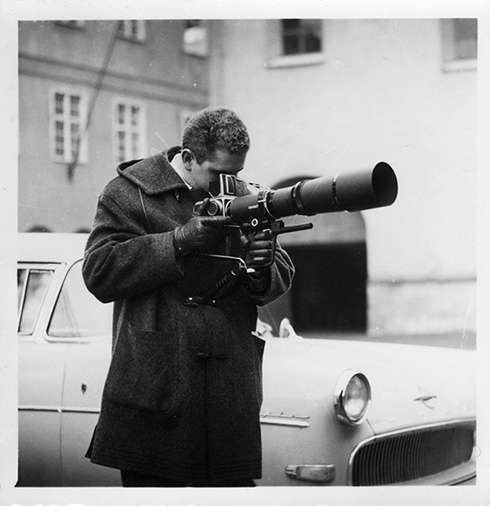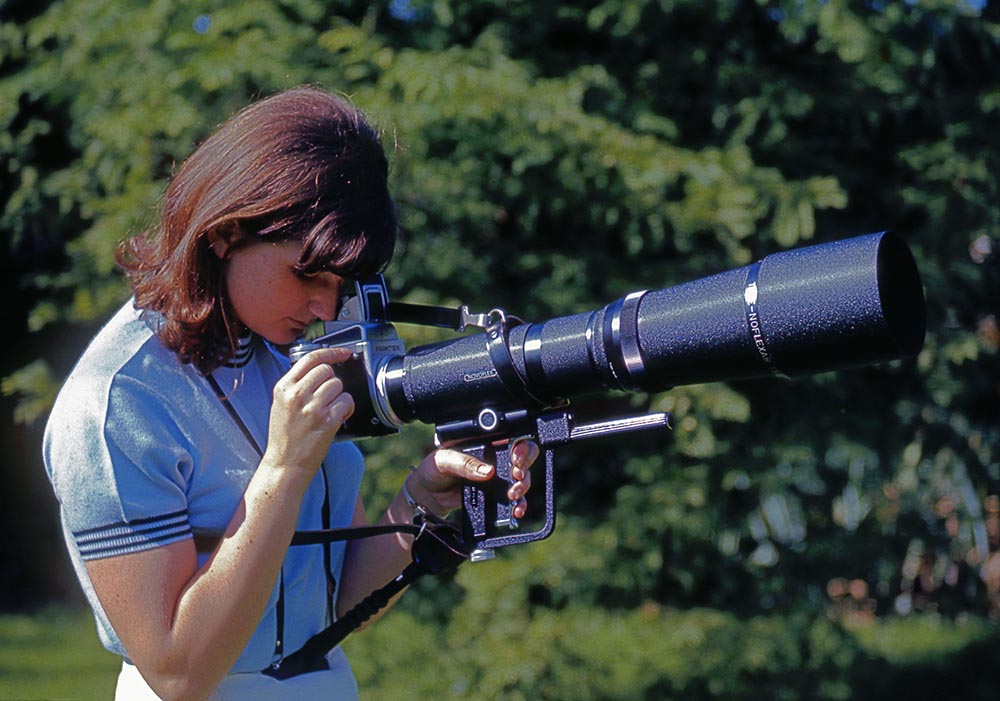|
The Pentacon Six System
by TRA Lens Data Summary Review of the 500mm Tele-Noflexar
Lens
Aperture control This is manual aperture lens: there is no auto diaphragm stop-down operation, nor even a “pre-set” lock, in contrast to the pre-set lenses from Meyer-Optik and some other manufacturers; however, there are détentes at each full stop position, so you do not need to be looking at the aperture ring; you just count the clicks to stop down:
Focussing Having squeezed the focussing trigger to achieve the desired focus, you can lock it in place with the other hand, using a locking knob which is situated on each side of the lens to enable operation with either hand. Then you need to stop down and then fire the shutter. With three things to do and only two hands, you can choose which two are critical in the particular shooting situation:
Novoflex made a point of stating that these lenses were indeed designed to be used at maximum aperture. As stated in the review for the
240mm Noflexar, focussing with the pistol grip is
much faster and easier than by rotating the grip
on a standard focussing helical ring, as is found
on most lenses, and can be continuously varied as
required when tracking a moving object such as a
bird or other wild life – or even a footballer or
players in other sports, cyclists, car or horse
races, etc. For all of these subjects, and
many others, the 500mm Tele-Noflexar is ideal. |
| Changing lens heads
If swapping the two lens heads, it will be necessary to re-focus, even if the lens pistol grip has been locked onto infinity with the previous lens. Durability Some 50 or more years after
manufacture, the lens is optically as good as new,
as are the aperture blades. The metal parts
of the lens barrel also show minimal signs of wear
- an indication of the quality of manufacture and
the care taken by the previous owner(s).
However, the rubber ring that is recessed into
(and extends above) the aperture control ring is
beginning to perish in some places, as may be
visible in the above two photos. (Look at
the underside of the lens, where there is a
missing section of rubber, and one end is coming
away.) Fortunately, it is possible to obtain
suitable replacement material for this, but I
wanted you to see the original before I changed
it. I notice from the images received
from Novoflex in 2016 that later versions of
this lens head did not have the rubber-covered
aperture ring but a ring in fluted metal (with
narrow, straight, longitudinal cuts in the metal)
– see first and third images here. |
